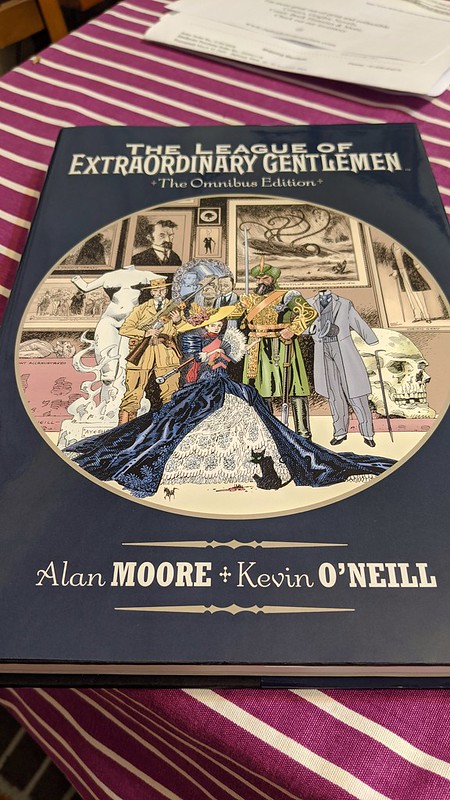
Though the history is the most intriguing part of this book, the modern-day action is the most interesting. Meanwhile, we get a fun modern-day story that tells us of the future of some of our original League characters, decades later. And, in the process it also presents a whole world that is more obviously not quite like our own (especially with the "Big Brother" takeover of England). Moore's second-and-a-halfth League story does a rather magnificent job of detailing an entire history for the League, from the 17th century to the 1950s, laying the foundation for any number of intriguing stories about a multitude of Leagues. It's certainly part of the deconstruction that Moore began in V1, but it may go too far for the faint of heart.

Is this volume a bit too violent and explicit? Perhaps. It's wonderful to see how they all change (after the foundation of their characters in V1). Meanwhile, Moore dramatically develops the pulp heroes that we met in the first volume, turning them into true characters with character arcs all their own. (And that's not even counting the wonderful first issue, which mashes together a few Martian planetary romances.) The result is a very different sort of adventure tale from the first, but one that's both more evocative and engaging. Wells, primarily The War of the Worlds, but with an amusing diversion to The Island of Doctor Moreau. Moore casts his nets wider in this second volume by incorporating the tales of H.G. It's an interesting take on these "heroes" who still manage to live up to the name.Īs for the plot: it's quite slow early on, as Moore brings the crew together, but it really takes off in the last few issues when mysteries are revealed and London itself is under siege. Allan Quartermain is a tweaker Mina Harker is as cold, ruthless, and inhumane as her undead tormenter the Invisible Man is a sociopath and rapist Jekyll and Hyde are a paired victim and monster and Nemo is also there (barely). However, Moore also does something else with League: he viciously deconstructs these heroes of yesterday.

(Does it matter if the average reader doesn't recognize them? Maybe.) Not just the big names like Nemo, Jekyll, Mina Harker, and the rest, but also most of the characters they meet along the way.

What Moore does here is perhaps more expansive than any previous attempt, as nearly everyone in this comic is a literary figure. The crossover Wold Newton family proposed by Philip José Farmer is probably the best known, though Warren Ellis' Planetary also plays with the idea. Moore isn't the first person to mash-up many classic heroes.


 0 kommentar(er)
0 kommentar(er)
